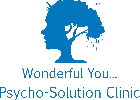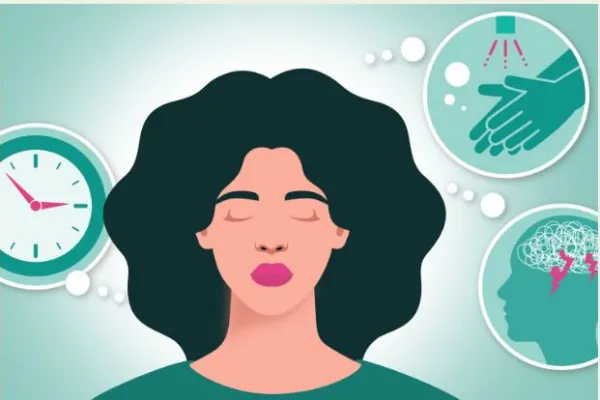
Obsessive-Compulsive Disorder (OCD) is a mental health condition marked by unwanted and intrusive thoughts (obsessions) that lead to repetitive behaviors (compulsions).
- It's a challenge that affects many people, but the good news is there are effective ways to cure it without medication.
- This blog explores the various therapy options available for treating OCD, emphasizing the importance of understanding and acceptance in curing this condition.
1. Cognitive Behavioral Therapy (CBT):
- Cognitive Behavioral Therapy (CBT) is a popular and effective treatment for OCD.
- It focuses on changing the thought patterns and behaviors that fuel the disorder. CBT helps individuals recognize and reevaluate their obsessive thoughts, developing healthier responses.
- This therapy aims to break the cycle of obsessions and compulsions by teaching skills to release anxiety and stopping compulsive behaviors.
- Here are powerful techniques:
i. Cognitive Restructuring:
- This technique involves identifying and challenging the irrational beliefs and distorted thinking patterns that contribute to OCD symptoms.
- Patients learn to recognize their automatic negative thoughts (like overestimating danger or underestimating their ability to cope) and are taught to question and reframe these thoughts in a more realistic and balanced way.
- This will help reduce the power of obsessions and the anxiety they produce.
ii. Behavioral Experiments
- These are experiments designed to test the beliefs of patients about their obsessions and compulsions.
- For example, if a patient believes that not performing a certain ritual will result in harm, a behavioral experiment might involve not performing the ritual and observing the outcome.
- This will help to disconfirm irrational beliefs and reduce compulsive behavior.
iii. Habit Reversal Training
- This is particularly useful for compulsive behaviors and involves learning to recognize the urge to perform a compulsion, and then consciously implementing an alternative, non-harmful behavior instead.
- This helps in breaking the cycle of compulsions.
iv. Relapse Prevention
- Toward the later stages of therapy, relapse prevention strategies become crucial.
- Patients learn to identify potential triggers and early warning signs of a relapse and develop strategies to cope with them effectively.
- This ensures to enjoy OCD free life.
2. Exposure and Response Prevention (ERP):
- Exposure and Response Prevention (ERP) is a highly effective therapeutic approach for treating Obsessive-Compulsive Disorder (OCD), falling under the broader category of Cognitive Behavioral Therapy (CBT).
- ERP specifically targets the cycle of obsessions and compulsions characteristic of OCD by systematically and gradually exposing individuals to situations that trigger their obsessions while helping them refrain from engaging in compulsive behaviors. Here's a detailed look at key ERP techniques:
i. Identifying Triggers
- The first step in ERP involves working with a therapist to identify the specific thoughts, images, objects, or situations that trigger the individual's obsessive thoughts and compulsive behaviors.
- This step is crucial for creating a personalized treatment plan that addresses the individual's unique triggers.
ii. Creating a Fear Hierarchy
- Once triggers are identified, the individual and therapist collaboratively create a fear hierarchy or ladder.
- This list ranks the triggers from least to most anxiety-provoking.
- The hierarchy is used to systematically expose the individual to their fears in a controlled and gradual manner, starting with the least anxiety-inducing situations and progressively moving up to more difficult ones.
iii. Controlled Exposure
- Controlled exposure, or simply "exposure," involves the individual deliberately confronting their triggers without avoiding them.
- This can be done in vivo (directly facing the fear in real life) or imaginally (vividly imagining the feared situation).
- The goal is to desensitize the individual to the triggers, reducing the anxiety and distress they cause over time.
iv. Preventing the Response (Compulsion)
- The "response prevention" component of ERP is where the individual resists the urge to perform their usual compulsive behaviors after exposure to a trigger.
- By not engaging in the compulsion, the individual learns that the anxiety or distress diminishes on its own over time, and that the feared consequences of not performing the compulsion do not materialize.
v. Gradual Increase in Exposure Difficulty
- ERP therapy starts with exposures that provoke a manageable level of anxiety, based on the fear hierarchy.
- As the individual becomes more comfortable facing their fears without resorting to compulsions, the therapist gradually introduces more challenging exposures.
- This approach helps build confidence and resilience in removing anxiety.
vi. Homework Assignments
- Between therapy sessions, individuals are often given homework assignments to practice exposure and response prevention in their daily lives.
- This is a crucial aspect of ERP, as it helps reinforce the skills learned in therapy and accelerates progress.
vii. Relapse Prevention
- Towards the end of therapy, emphasis is placed on developing strategies to maintain progress and handle potential relapses.
- This includes identifying early warning signs of a relapse, reinforcing the importance of continued practice of ERP techniques, and planning for how to cope with future stressors or triggers.
- ERP requires a significant commitment and willingness to face one’s fears, but it is highly effective for many individuals with OCD, providing them with the tools to manage their symptoms and significantly improve their quality of life.
3. Neuro-Linguistic Programming (NLP)
- Neuro-Linguistic Programming (NLP) is a psychological approach that involves understanding and changing a person's thoughts, feelings, and behaviors by altering their linguistic and neurological processes.
- NLP is based on the premise that the words we use reflect our inner, subconscious perception of our problems.
- By changing the way we describe our thoughts and feelings to ourselves and others, we can adjust our thought patterns and behaviors.
i. Reframing
- Reframing involves changing the perspective on a situation to alter its meaning and the emotions associated with it.
- In the context of OCD, reframing can help individuals see their intrusive thoughts in a different light, reducing the anxiety and urgency they feel about these thoughts.
- For example, instead of viewing an intrusive thought as a serious threat, the individual learns to see it as a common occurrence in OCD that doesn't need to dictate their actions.
ii. Anchoring
- Anchoring is an NLP technique where a specific sensory experience (like touching a finger to a thumb) is made to trigger a desired emotional state.
- People with OCD might use anchoring to calm anxiety or to interrupt the onset of compulsive behaviors.
- By associating a physical touch with a state of calmness or confidence, individuals can learn to access these positive states more readily in moments of distress.
iii. Visualization
- Visualization or mental rehearsal is used in NLP to practice new behaviors or reactions in the mind's eye.
- For someone with OCD, this could involve vividly imagining themselves facing a trigger for their obsessions without engaging in the compulsive response, thereby mentally practicing and reinforcing alternative, healthier behaviors.
iv. Disassociation
- This technique involves mentally stepping out of one’s body to observe oneself in a particular situation. It can help reduce the intensity of negative feelings associated with an OCD trigger.
- For example, by viewing their anxious response to an obsessive thought from an outside perspective, an individual may gain a more objective understanding of their behavior and feelings, leading to decreased emotional distress.
v. Swish Pattern
- The Swish Pattern technique aims to change unwanted behaviors or reactions by replacing them with more desirable ones.
- It involves visualizing the unwanted behavior or thought and then quickly "swishing" it away and replacing it with a positive image that represents the desired outcome.
- Over time, this can help diminish the automatic response to an OCD trigger and replace it with a more constructive response.
vi. Belief Change
- NLP also focuses on identifying and modifying limiting beliefs that underpin OCD symptoms, such as the belief that one must perform compulsions to prevent disaster.
- By challenging and altering these beliefs, individuals can reduce the power of their OCD symptoms.
- While NLP offers interesting tools and techniques for personal development and may provide some benefit for individuals with OCD.
4. Acceptance and Commitment Therapy (ACT)
- Acceptance and Commitment Therapy (ACT) is a form of psychotherapy that helps people live in ways that reflect their values, even in the presence of unwanted thoughts, feelings, and sensations.
- Here’s how ACT is applied to treat OCD:
i. Cognitive Defusion
- Cognitive defusion involves learning to see thoughts and feelings for what they really are: just thoughts and feelings, not absolute truths or commands that must be followed.
- For someone with OCD, this means recognizing that obsessive thoughts do not require a compulsive response.
- Techniques include saying thoughts out loud repeatedly until they lose their power or imagining thoughts as objects floating by, which helps to reduce their impact.
ii. Acceptance
- Instead of fighting, avoiding, or being ashamed of the unwanted thoughts and feelings that come with OCD, acceptance involves opening up and making room for them.
- This doesn’t mean liking or wanting these experiences, but rather allowing them to be there without struggle.
- This will reduce the struggle with internal experiences, which is often counterproductive.
iii. Mindfulness
- Mindfulness in ACT focuses on being present in the moment and observing one’s experiences without judgment.
- This practice can help individuals with OCD not to get caught up in their thoughts and feelings.
- By paying attention on purpose, in the present moment, and non-judgmentally, individuals learn to engage more fully with their lives.
iv. Self-as-Context
- This component helps individuals see themselves as more than their thoughts, feelings, or symptoms. It creates a sense of continuity and wholeness, enabling individuals to understand that having OCD thoughts does not define who they are or control their actions.
- Techniques involve perspective-taking exercises where one learns to observe one's experiences from a broader viewpoint.
v. Values Clarification
- ACT helps individuals clarify what is truly important and meaningful to them—their values.
- This could include relationships, personal growth, health, creativity, etc.
- Understanding what one values can motivate action that is congruent with those values, rather than action dictated by OCD symptoms.
vi. Committed Action
- Once values are clarified, ACT focuses on taking committed action that aligns with these values.
- For someone with OCD, this means engaging in life-enhancing behaviors even in the presence of difficult thoughts and feelings.
- This component of ACT is about setting goals based on one’s values and taking effective action to achieve them, using strategies like goal setting, behavioral activation, and skills training.
5. Distress Tolerance Skills
- Distress Tolerance Skills, often associated with Dialectical Behavior Therapy (DBT), focus on helping individuals endure and survive crisis situations without resorting to harmful or counterproductive behaviors.
i. Self-Soothing Techniques
- Self-soothing techniques are designed to calm and comfort oneself through the five senses (sight, sound, touch, taste, and smell).
- For someone with OCD, engaging in self-soothing activities like taking a warm bath, listening to calming music, or savoring a favorite scent can provide a temporary reprieve from distress, making it easier to resist compulsive behaviors.
ii. Distraction
- Distraction involves temporarily diverting attention away from distressing emotions or thoughts by focusing on something unrelated.
- This will be particularly useful during intense urges to perform a compulsion. Activities will include watching a movie, engaging in a hobby, or going for a walk etc.
- The goal is not to avoid the distress permanently but to give oneself a break to decrease the intensity of emotions and urges.
iii. Improving the Moment
- This involves using imagination, meaning-making, prayer, relaxation, or vacation (stepping back mentally) to make the current situation more bearable.
- For example, individuals might visualize a peaceful place, find meaning in their suffering (seeing it as a path to growth), or use relaxation techniques such as deep breathing to reduce immediate distress.
iv. Radical Acceptance
- Radical acceptance is about fully accepting reality as it is in the moment, without trying to change it. This can be challenging but incredibly freeing for individuals with OCD.
- By accepting the presence of obsessive thoughts without judgment and acknowledging that these thoughts don’t need to lead to compulsive actions, individuals can reduce the struggle they experience and decrease their overall distress.
v. Mindfulness of Current Emotions
- This involves observing and experiencing emotions without attempting to change them.
- It teaches individuals to tolerate their emotions, recognize them as transient states, and not act impulsively based on how they feel.
- This skill is crucial for managing the intense emotions that trigger compulsive behaviors in OCD.
vi. TIPP Skills
TIPP stands for Temperature, Intense exercise, Paced breathing, and Paired muscle relaxation—techniques aimed at quickly reducing emotional arousal:
Temperature: Using cold water (e.g., splashing the face or holding ice) to trigger a dive reflex, which helps calm down the nervous system.
Intense Exercise: Engaging in short bursts of intense exercise to quickly expend energy and reduce high levels of stress or anxiety.
Paced Breathing: Slowing down the breath to calm the nervous system.
Paired Muscle Relaxation: Tensing and then relaxing different muscle groups in conjunction with deep breathing.
6. Mindfulness Skills
- Mindfulness involves staying present and fully engaging with the current moment without judgment.
- For those with OCD, mindfulness skills can be particularly helpful in observing obsessive thoughts without getting caught up in them. This practice helps in recognizing that thoughts are not facts and don't necessarily require any action, thus reducing the urgency to perform compulsions.
- Here are some key mindfulness techniques used in treating OCD:
i. Mindful Breathing
- This foundational mindfulness practice involves focusing attention on the breath as it enters and leaves the body.
- When practicing mindful breathing, individuals with OCD learn to anchor themselves in the present moment, which provide a break from engaging with obsessive thoughts or compulsions.
- The simplicity of focusing on breathing helps to cultivate a sense of calm and groundedness.
ii. Body Scan Meditation
- Body scan meditation involves paying attention to different parts of the body in sequence, noticing any sensations, tension, or discomfort without trying to change anything.
- For someone with OCD, this practice encourages a non-reactive stance towards whatever experiences arise, teaching the skill of observation without judgment.
- It will be particularly helpful in reducing the physical tension associated with anxiety.
iii. Observing Thoughts
- This technique involves observing thoughts as they come and go, without attaching to them or pushing them away.
- Individuals learn to view their thoughts as passing mental events rather than truths that must be acted upon.
- For OCD treatment, this will help lessen the grip of obsessive thoughts and reduce the urge to perform compulsive behaviors in response to these thoughts.
iv. Mindful Listening
- Mindful listening is the practice of fully engaging with sounds in the environment or in a piece of music, focusing completely on the act of listening.
- This will help individuals with OCD to divert their attention away from intrusive thoughts and ground themselves in the present moment, fostering a greater sense of peace and calm.
v. Mindful Movement
- Mindful movement, such as walking meditation or gentle yoga, combines physical activity with mindfulness.
- By focusing attentively on the movement of the body and the sensations that arise, individuals will enhance their awareness of the present moment and reduce engagement with obsessive thoughts or compulsions.
- This practice supports both mental and physical well-being.
vi. Loving-Kindness Meditation
- Loving-kindness meditation focuses on cultivating feelings of compassion and love towards oneself and others.
- For individuals with OCD, this practice will be particularly powerful in addressing feelings of shame or self-criticism that often accompany the disorder.
- By fostering a kinder relationship with oneself, the harshness of self-judgment that fuels OCD will be softened.
7. Combining Therapies
- Often, a combination of these therapies proves to be the most effective treatment for OCD.
- It's important for individuals to work closely with their therapists to find the right mix of therapies that work best for them.
- Remember, the goal of OCD treatment is not to eliminate uncertainty or discomfort entirely but to live a fulfilling life despite them.
8. Seeking Help
- If you or someone you know is struggling with OCD, it's crucial to seek help from a psychologist who is experienced in treating OCD.
- She/He will provide guidance on the most appropriate treatment plan. It's also important to be patient and compassionate with oneself throughout the treatment process. Recovery takes time, and setbacks are a normal part of the journey.
Conclusion
- OCD is a challenging condition, but with the right therapeutic approach, it will be cured without medication.
- Whether it's through CBT, ERP, ACT, distress tolerance, or mindfulness skills, there's hope for those living with OCD.
- By understanding and embracing these therapies, individuals with OCD will fully cured and lead healthier, more fulfilling lives.
- Thus we say "OCD Treatment without Medicine" is possible.






rajat
28 Mar 2024great article
aman
28 Mar 2024good
sameer
28 Mar 2024great help mam
kajal chandna
28 Mar 2024surely i will overcome my ocd issue soon
amit
29 Mar 2024best
deepak
30 Mar 2024best ocd doctor of india